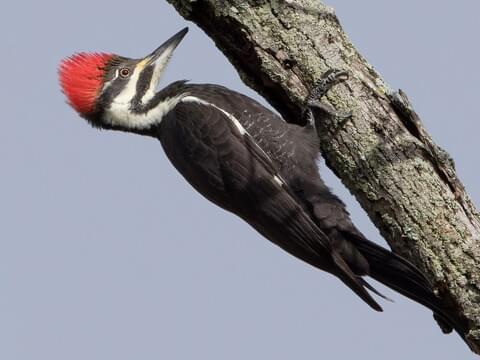Observing Woodpeckers in Florida: Types Variety and Distribution
Observing Woodpeckers in Florida: Types Variety and Distribution
Blog Article
Discover the Fascinating World of Woodpeckers: Every Little Thing You Need to Know
The globe of woodpeckers is a world loaded with distinct behaviors, intricate adjustments, and a diverse selection of varieties. From their habitats and circulation patterns to their feeding behaviors and specialized physiological features, woodpeckers have actually long astounded the interest of ornithologists and nature lovers alike. Understanding the complexities of these remarkable birds supplies a glimpse into the complicated interaction in between their biology and the atmosphere. As we check out the world of woodpeckers further, we uncover a riches of info that loses light on their importance in ecosystems and the obstacles they encounter in an ever-changing world.
Woodpecker Habitats and Circulation
In North America, for instance, woodpeckers can be detected in both coniferous and deciduous woodlands, utilizing their strong beaks to forage for pests and produce nesting dental caries in trees. In Africa, certain woodpecker varieties have adapted to dry environments, such as the acacia woodlands, where they play an essential duty in managing insect populations.

Feeding Behaviors and Diet Plan
Amongst the different aspects of their actions, woodpeckers show distinctive feeding habits and nutritional preferences. These birds are mostly insectivores, with a diet plan that includes ants, beetles, caterpillars, and other pests discovered in trees. Woodpeckers use their solid beaks to pierce into the bark of trees, penetrating for bugs and larvae hidden underneath the surface area. In enhancement to insects, woodpeckers additionally eat nuts, seeds, fruits, and sap. Some species have specialized tongues with barbed suggestions that aid them extract insects from gaps in wood.
Woodpeckers are recognized for their drumming actions, which serves not only to connect with various other woodpeckers yet also to find food. The quick drumming noise is produced by the bird pecking on powerful surfaces like dead trees or metal posts. This behavior can bring in insects concealed in the timber, enabling the woodpecker to spot their existence and prey on them.
Unique Adjustments for Tree Climbing
In their proficient important source quest of bugs concealed within tree bark, woodpeckers have developed exceptional physiological features that furnish them with distinct adaptations for efficient tree climbing. One of the key adjustments is their zygodactyl feet, with two toes directing forward and 2 directing in reverse, offering a strong grip on tree trunks. This specialized foot arrangement allows woodpeckers to hold on to upright surface areas easily, allowing them to relocate up and down trees with agility. Additionally, woodpeckers have stiff tail plumes that serve as an encouraging prop while they climb, helping in balance and security. Their solid, chisel-like beaks are not just utilized for boring right into timber however also for grasping onto bark as they ascend tree trunks. Moreover, woodpeckers have strong neck muscles and an one-of-a-kind skull structure that soak up the influence redirected here of consistent pecking, permitting them to climb up and down without triggering harm to their brains. These adaptations display the amazing evolutionary layout that enables woodpeckers to browse trees with precision and efficiency.
Diverse Woodpecker Types Worldwide
With over 200 different species spread throughout different habitats worldwide, the family members of Picidae includes a remarkable diversity of woodpeckers. These birds can be found in forests, forests, savannas, and also metropolitan locations, showcasing their flexibility to various atmospheres. From the legendary Northern Flicker in North America to the colorful and elusive Crimson-backed Flameback in Asia, each woodpecker types displays one-of-a-kind features in terms of plumage, actions, and habitat preference.
Woodpeckers vary greatly in dimension, with the small Downy Woodpecker measuring around 6-7 inches in size, while the powerful Lineated Woodpecker can reach up to 17 inches - Woodpeckers in Florida. Their beaks likewise come in different sizes and shapes, showing their feeding behaviors. Some species focus on removing bugs from tree bark, like the Acorn Woodpecker, while others, such as the Black-cheeked Woodpecker, feed on fruits and seeds

Conservation Initiatives and Obstacles
Preservation initiatives for woodpecker populations are critical in alleviating go to website the impact of habitat loss and various other hazards encountering these diverse bird varieties. Woodpeckers face various difficulties to their survival, mostly due to logging, urbanization, climate modification, and invasive varieties. To resolve these issues, conservation efforts concentrate on shielding and bring back woodpecker habitats, carrying out sustainable forestry practices, and increasing recognition concerning the relevance of these birds in communities.
One substantial difficulty in woodpecker preservation is the fragmentation of their environments, resulting in separated populaces that are much more vulnerable to extinction - Woodpeckers in Florida. Preservationists function to create wild animals passages and shielded areas that attach these fragmented environments, enabling woodpeckers to move between various areas for feeding, reproducing, and sanctuary

Conclusion
In conclusion, woodpeckers are remarkable birds with unique adjustments for tree climbing and feeding behaviors. Further study and conservation actions are required to guarantee the survival of woodpeckers in the wild.
Report this page